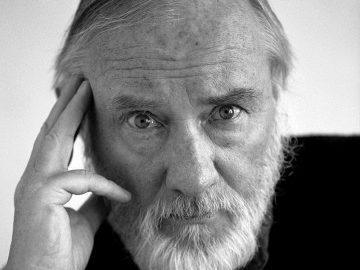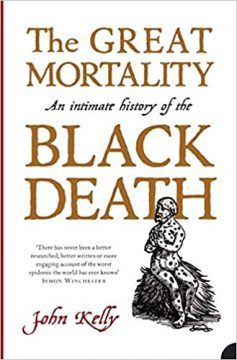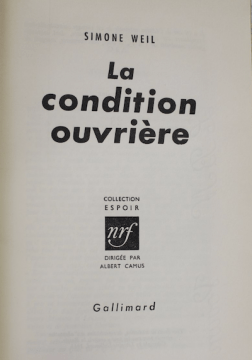Mark Horowitz in The New York Times:
 Fifty years ago, the screenwriter Robert Towne said to his girlfriend, “I want to write a movie for Jack.” He meant Nicholson — in those days, and possibly even now, there is only one Jack — who had just had his breakout role in “Easy Rider.” “A detective movie,” Towne explained. “Maybe Jane Fonda for the blonde.” He knew he wanted to set it in Los Angeles before the war, like a Raymond Chandler novel. But that was about the extent of it. When he told Nicholson, the actor naturally asked, “What’s it about?”
Fifty years ago, the screenwriter Robert Towne said to his girlfriend, “I want to write a movie for Jack.” He meant Nicholson — in those days, and possibly even now, there is only one Jack — who had just had his breakout role in “Easy Rider.” “A detective movie,” Towne explained. “Maybe Jane Fonda for the blonde.” He knew he wanted to set it in Los Angeles before the war, like a Raymond Chandler novel. But that was about the extent of it. When he told Nicholson, the actor naturally asked, “What’s it about?”
“I don’t know,” Towne admitted. “Water.”
This exchange appears in “The Big Goodbye: ‘Chinatown’ and the Last Years of Hollywood,” by Sam Wasson. Not exactly the seminal Rosebud story one hopes to discover in a new history of a favorite film. Still, from that modest inception, great things did come. Four years later, Paramount Pictures released “Chinatown,” written by Towne, directed by Roman Polanski, produced by Robert “The Kid Stays in the Picture” Evans. (Faye Dunaway, not Jane Fonda, played “the blonde.”) And now, almost a half-century later, “Chinatown” routinely appears on the short lists of best Hollywood films, whether they’re generated by the American Film Institute or the BBC. One panel of British film critics even voted it the single best film of all time.
“Chinatown”’s murky and amoral plot — involving a corrupt web of stolen water rights and sleazy land development, behind which lurk the even darker sins of murder and incest — resonated with demoralized Watergate-era audiences. Nominated for 11 Academy Awards, the film lost for best picture of 1974 to “Godfather II,” but Towne won for best original screenplay.
“The Big Goodbye” is part of a welcome and newish publishing trend: deeply researched and elaborately subtitled books about a single movie, which explore and reframe the film as an inflection point within the broader culture. Three recent and admirable examples are “We’ll Always Have Casablanca: The Life, Legend, and Afterlife of Hollywood’s Most Beloved Movie,” by Noah Isenberg; “The Wild Bunch: Sam Peckinpah, a Revolution in Hollywood, and the Making of a Legendary Film,” by W. K. Stratton; and “High Noon: The Hollywood Blacklist and the Making of an American Classic,” by Glenn Frankel.
More here.
 When Stone mustered out of the navy in the late fifties, the United States had perhaps reached its zenith in terms of economic success and dominance, political hegemony worldwide, and a vibrant and vigorous culture, ripe for exportation in multiple embodiments: from serious literature and high art to B movies, pop music, and Coca-Cola. It seemed a national moment free of self-doubt—although a considerable dysphoria would soon begin to express itself, as the social upheavals of the sixties began. Stone, who did not begin the world from a position of privilege, was quicker than most to see the shadows cast by the rising American star. In his work, he would repeatedly portray those bright aspirations set off by a surrounding darkness that was likely in the end to devour them.
When Stone mustered out of the navy in the late fifties, the United States had perhaps reached its zenith in terms of economic success and dominance, political hegemony worldwide, and a vibrant and vigorous culture, ripe for exportation in multiple embodiments: from serious literature and high art to B movies, pop music, and Coca-Cola. It seemed a national moment free of self-doubt—although a considerable dysphoria would soon begin to express itself, as the social upheavals of the sixties began. Stone, who did not begin the world from a position of privilege, was quicker than most to see the shadows cast by the rising American star. In his work, he would repeatedly portray those bright aspirations set off by a surrounding darkness that was likely in the end to devour them.
 The term “bird’s nest” has come to describe a messy hairdo, tangled fishing line and other unspeakably knotty conundrums. But that does birds an injustice. Their tiny brains, dense with neurons, produce marvels that have long captured scientific interest as naturally selected engineering solutions — yet nests are still not well understood. One effort to disentangle the structural dynamics of the nest is underway in the sunny yellow lab — the Mechanical Biomimetics and Open Design Lab — of Hunter King, an experimental soft-matter physicist at the University of Akron in Ohio. “We hypothesize that a bird nest might effectively be a disordered stick bomb, with just enough stored energy to keep it rigid,” Dr. King said. He is the principal investigator of an ongoing study, with
The term “bird’s nest” has come to describe a messy hairdo, tangled fishing line and other unspeakably knotty conundrums. But that does birds an injustice. Their tiny brains, dense with neurons, produce marvels that have long captured scientific interest as naturally selected engineering solutions — yet nests are still not well understood. One effort to disentangle the structural dynamics of the nest is underway in the sunny yellow lab — the Mechanical Biomimetics and Open Design Lab — of Hunter King, an experimental soft-matter physicist at the University of Akron in Ohio. “We hypothesize that a bird nest might effectively be a disordered stick bomb, with just enough stored energy to keep it rigid,” Dr. King said. He is the principal investigator of an ongoing study, with 
 Less than a century after the Black Death descended into Europe and killed 75 million people—as much as 60 percent of the population (90% in some places) dead in the five years after 1347—an anonymous Alsatian engraver with the fantastic appellation of “Master of the Playing Cards” saw fit to depict St. Sebastian: the patron saint of plague victims. Making his name, literally, from the series of playing cards he produced at the moment when the pastime first became popular in Germany, the engraver decorated his suits with bears and wolves, lions and birds, flowers and woodwoses. The Master of Playing Cards’s largest engraving, however, was the aforementioned depiction of the unfortunate third-century martyr who suffered by order of the Emperor Diocletian. A violent image, but even several generations after the worst of the Black Death, and Sebastian still resonated with the populace, who remembered that “To many Europeans, the pestilence seemed to be the punishment of a wrathful Creator,” as John Kelly notes in
Less than a century after the Black Death descended into Europe and killed 75 million people—as much as 60 percent of the population (90% in some places) dead in the five years after 1347—an anonymous Alsatian engraver with the fantastic appellation of “Master of the Playing Cards” saw fit to depict St. Sebastian: the patron saint of plague victims. Making his name, literally, from the series of playing cards he produced at the moment when the pastime first became popular in Germany, the engraver decorated his suits with bears and wolves, lions and birds, flowers and woodwoses. The Master of Playing Cards’s largest engraving, however, was the aforementioned depiction of the unfortunate third-century martyr who suffered by order of the Emperor Diocletian. A violent image, but even several generations after the worst of the Black Death, and Sebastian still resonated with the populace, who remembered that “To many Europeans, the pestilence seemed to be the punishment of a wrathful Creator,” as John Kelly notes in  Wuhan is known colloquially as one of the “four furnaces” (四大火炉) of China for its oppressively hot humid summer, shared with Chongqing, Nanjing and alternately Nanchang or Changsha, all bustling cities with long histories along or near the Yangtze river valley. Of the four, Wuhan, however, is also sprinkled with literal furnaces: the massive urban complex acts as a sort of nucleus for the steel, concrete and other construction-related industries of China, its landscape dotted with the slowly-cooling blast furnaces of the remnant state-owned iron and steel foundries, now plagued by
Wuhan is known colloquially as one of the “four furnaces” (四大火炉) of China for its oppressively hot humid summer, shared with Chongqing, Nanjing and alternately Nanchang or Changsha, all bustling cities with long histories along or near the Yangtze river valley. Of the four, Wuhan, however, is also sprinkled with literal furnaces: the massive urban complex acts as a sort of nucleus for the steel, concrete and other construction-related industries of China, its landscape dotted with the slowly-cooling blast furnaces of the remnant state-owned iron and steel foundries, now plagued by  IN THE SUMMER or fall of 1943, La France libre, the London-based provisional government led by General Charles de Gaulle, received a letter from across the Channel. In three closely typed pages, the writer, identifying himself as “un résistant intellectuel,” described the “anguish” he felt as he surveyed the political and moral landscape of Nazi-occupied France. We are teetering, he declared, between renaissance and ruin. Moreover, those struggling on behalf of the former were driven by two often competing ideals: “The clear desire for justice and profound demand for liberty.” Yet, he warned, if we can one day create a doctrine based on these two imperatives, they would lead to the “complete overhaul” of the nation’s constitutional and financial institutions. One way or another, in short, France would never again be the same.
IN THE SUMMER or fall of 1943, La France libre, the London-based provisional government led by General Charles de Gaulle, received a letter from across the Channel. In three closely typed pages, the writer, identifying himself as “un résistant intellectuel,” described the “anguish” he felt as he surveyed the political and moral landscape of Nazi-occupied France. We are teetering, he declared, between renaissance and ruin. Moreover, those struggling on behalf of the former were driven by two often competing ideals: “The clear desire for justice and profound demand for liberty.” Yet, he warned, if we can one day create a doctrine based on these two imperatives, they would lead to the “complete overhaul” of the nation’s constitutional and financial institutions. One way or another, in short, France would never again be the same. Once upon a time, there was a man who thought love was a maths problem.
Once upon a time, there was a man who thought love was a maths problem. Michael Tomasky in the NYRB:
Michael Tomasky in the NYRB: Anthony Paletta in The Boston Review:
Anthony Paletta in The Boston Review: Jeremy Rossman in The Conversation:
Jeremy Rossman in The Conversation: Greg Valliere of AGF Investments over at the firms’ website:
Greg Valliere of AGF Investments over at the firms’ website:
 Fifty years ago, the screenwriter Robert Towne said to his girlfriend, “I want to write a movie for Jack.” He meant Nicholson — in those days, and possibly even now, there is only one Jack — who had just had his breakout role in “Easy Rider.” “A detective movie,” Towne explained. “Maybe Jane Fonda for the blonde.” He knew he wanted to set it in Los Angeles before the war, like a Raymond Chandler novel. But that was about the extent of it. When he told Nicholson, the actor naturally asked, “What’s it about?”
Fifty years ago, the screenwriter Robert Towne said to his girlfriend, “I want to write a movie for Jack.” He meant Nicholson — in those days, and possibly even now, there is only one Jack — who had just had his breakout role in “Easy Rider.” “A detective movie,” Towne explained. “Maybe Jane Fonda for the blonde.” He knew he wanted to set it in Los Angeles before the war, like a Raymond Chandler novel. But that was about the extent of it. When he told Nicholson, the actor naturally asked, “What’s it about?”